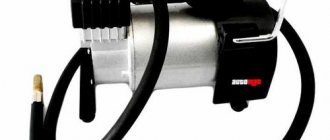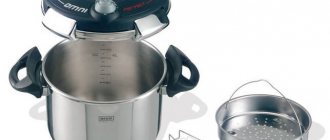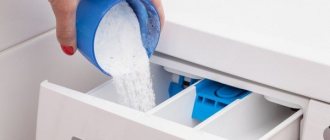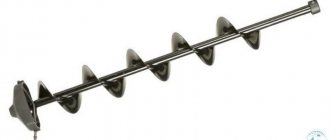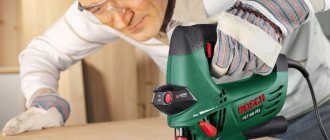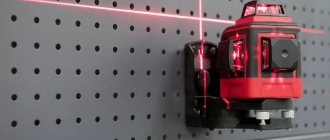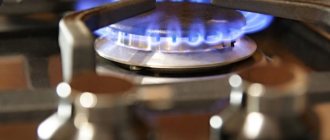Design and purpose of power tools
A screwdriver is used to tighten and unscrew various fasteners. The tool can cut threads and drill. It greatly facilitates and speeds up the work. Screwdrivers are used in everyday life, construction, furniture assembly, in auto repair shops, anywhere where you need to work with a large number of fasteners.
The screwdriver can be cordless or corded
Main elements of a screwdriver:
- Cartridge.
- Torque control clutch.
- Speed shifter.
- Motor in the screwdriver housing.
- The gearbox is enclosed in the tool body.
- Reverse switch.
- Power button.
- The handle is rubberized to prevent slipping.
- Battery.
- Power cord.
Screwdrivers are powered by batteries or mains.
Chuck rotation direction
The design of the drill-screwdriver has a push-type switch with which you can change the direction of rotation of the chuck to tighten or unscrew the fastener.
There is a directional designation on both sides of the instrument near this switch. By pressing the switch, you can reverse.
It must be remembered that the direction of rotation can only be changed when the electric motor is completely stopped.
In the middle position, the switch blocks the operation of the tool. This locking is used while replacing bits or drills.
If necessary, the drill-driver chuck can be replaced. It must be borne in mind that it is fixed with a screw with a left-hand thread, which means it must be unscrewed clockwise.
This screw can be accessed through the front of the chuck.
The tool kit also includes a set of drills of different diameters. All of them are designed to work in relatively soft materials.
The drill bits are clamped in the chuck in the same way as a bit attachment (see photo above)
To care for the instrument, simply wipe its body with a damp cloth and then dry it; do not use household chemicals or solvents. Freezing of the battery is not allowed.
How to work with attachments
Screwdrivers have different cartridges. Let's look at how to change the nozzle in all types.
- quick-release chuck. There are single-coupling and double-coupling types. Installed most often. To open the jaws and remove the old bit, rotate the front clutch counterclockwise. Insert a new bit and screw the coupling back on;
Spirit coupling chuck - hexagonal chuck with magnet. The nozzle is simply inserted and pulled out;
Replacing the bit in a hex chuck - snap clamp.
Found in pneumatic screwdrivers. The nozzle is inserted and snapped into place. To remove it, you need to pull the bit while holding the head of the clamp. You need to hold the head to remove the bit
Bits - attachments
The screwdriver comes with several types of bits with different working edge shapes.
Straight edge bits are designed to work with fasteners that have a single slot (spline). Depending on its length and depth, a suitable bit is selected.
The shape of the cross-shaped bit is selected in the same way - the width of the slot and the dimensions of the fastener head itself are taken into account here. For reliable operation, the edge of the bit must fit tightly into the splines, otherwise there is a risk of “licking off” the edges of the splines.
To attach the bat to the chuck, a special attachment with a magnetized holder is used, which prevents the structure from falling apart and reliably holds the bat in a variety of positions.
To secure the bit attachment, you need to unscrew the moving part of the chuck.
Insert the nozzle and screw the cartridge in until it stops.
There are also very convenient double-sided bits that can be fixed in a chuck without an attachment.
How to use a screwdriver: useful operating tips
After purchasing a screwdriver, follow simple recommendations regarding use. And then the tool will work for a long time and efficiently:
- Before connecting and removing the battery, turn off the screwdriver;
- do not allow the instrument to overheat, take breaks;
- adjust the torque control clutch correctly;
- after using high speeds, set the minimum speed and idle the engine for several minutes to cool it down;
- Check the cable of the mains screwdriver, and the power cord of the charger for the battery. If a tool or charger periodically loses power, the wire must be replaced;
- Do not use the screwdriver in rain or snow. In humid environments, you can only work under a canopy.
Tool usage options
When answering the question of how to use a screwdriver for beginners, you need to take into account the tasks of using the tool.
Drilling metal and wood with a screwdriver
To make a hole in durable materials, you need to select the right drill and set the desired mode. This is done using the rotating part of the tool, which is located directly behind the chuck. Then the drill must be placed at the desired point and the start button pressed.
Note! It is important to keep the device strictly perpendicular. Otherwise, the drill may break.
Drilling on wooden surfaces must be done according to the rules
Drilling concrete and stone with a screwdriver
To answer the question of how to properly drill concrete with a screwdriver, you must first pay attention to the choice of drill. It should have a pobedite tip. Typically, drills with a diameter of 6 mm are used. Tools that are too thick will not work because the power of the screwdriver will be too low.
The tool must be held perpendicular to the axis. There is no need to press too hard on the drill. From time to time the pressure needs to be loosened.
Tightening screws, self-tapping screws and bolts with a screwdriver
This is the main purpose of a screwdriver. Each tool has a series of numbers that indicate the tightening torque. The thicker the fastener and the harder the material, the higher the value you need to set.
To screw self-tapping screws into roofing metal, a value of 12-14 is required. To screw ordinary self-tapping screws into wood, 8 is enough.
You also need to know how to insert a screwdriver into a screwdriver. When tightening the fastener, you need to press the bit quite hard so that it slips.
How to regulate speed and force
The rotation speed is changed by a switch located on the screwdriver body. High speed is used for large bolts and screws, as well as for drilling, if such a function is present.
Speed shifter
Many models have a force limiting clutch. Its presence in a power tool can be determined by a rotating ring with numbers. Some users do not understand the meaning of the clutch and do not touch it. Using a ratchet, you can adjust the depth of screwing in the screw. If the material is too soft, the head of the fastener is easily recessed and can pass right through. When using small fasteners, very high torque can destroy it. The ratchet prevents the slots of the screws from being cut off and the screwdriver bits from wearing out. To determine the desired value on the adjusting ring, make several passes, starting with the minimum. For drilling mode, maximum torque is used. But only if such a function is available.
Force limit clutch
The start button also regulates the rotation speed, but no more than that set by the switch. Let's say you set the switch to the first speed, which is stated to be up to 800 rpm. Pressing the trigger as hard as possible will not increase the speed. And the torque in maximum mode will be low, that is, you will not be able to tighten large screws and drill. And if you set the switch to maximum speed, you will be able to drill and the speed will be much higher.
Adjust speed, torque and reverse when the tool is off.
How to drill correctly with a drill/driver
Some models of screwdrivers have more advanced functionality. They can drill holes and even work as a bump stop. Experienced builders do not recommend using a drill-driver at home for a long time, because the battery will quickly discharge, but for short-term work it will cope quite well.
To start using a screwdriver as a drill, you should:
- on the speed scale, select the appropriate designation (a drill is drawn), if there is none, you can select the maximum number,
- install the drill into the chuck.
Further work is performed in the following sequence:
- It is important to hold the tool correctly: take the screwdriver with your main hand, place your index finger on the trigger, and the second hand firmly holds the body.
- The drill/driver is held strictly perpendicular to the surface.
- By pressing the trigger, drilling occurs. You can also help your drill a little by applying a little pressure on it.
If you are working on a wooden surface, you need to periodically stop and clean the drill from chips. When drilling a thick hole, first of all you need to make a thin one (with an appropriate nozzle), and then insert a thick drill in its place, this way you can prevent the appearance of cracks in the wood.
Care and storage
- regularly disassemble and clean the internal elements of the screwdriver from carbon deposits, dust and dirt;
- If unstable operation occurs, carry out diagnostics. Check the wear of the brushes so that you do not have to change the motor armature;
- Do not leave the instrument in areas with high humidity or under the sun. The same goes for the battery;
- Do not keep the battery near keys, coins or other short metal objects. In case of accidental contact with the poles, the battery will short circuit. As a result, a fire may occur;
- At the end of the working day, take a clean rag and wipe the instrument. The cloth can be slightly moistened with water without using detergents;
- The screwdriver should be stored in a dry environment with positive temperatures. Use a case or other packaging to prevent the instrument from becoming covered in dust.
Operate a screwdriver, observing safety precautions and the rules described in the instructions. Choose the right equipment. And then the tool will serve you for a long time.
Screwing in and tightening fasteners
The instructions for using the device are simple:
- The tip of the nozzle is inserted into the slot of the self-tapping screw or screw, and the device is turned on.
- To increase or decrease the twisting speed, increase or decrease the pressure on the start button.
- When the self-tapping screw is tightened, the force limiting mechanism will automatically work, after which the work will stop.
- To unscrew the screw, the nozzle is placed in the slot, having previously set the lever for the direction of rotation of the nozzle in the opposite direction.
Let us highlight the main areas of use of a screwdriver:
- Screwing screws, screws, self-tapping screws, bolts and other fasteners
- Removing screws, screws, self-tapping screws, bolts and other fasteners
- Tightening anchors and dowels during installation work
- Removing Anchors and Dowels
- Drilling in hard and soft wood
- Drilling metal
- Threading in metal, etc.
It should be noted that the screwdriver is perfect for working in hard-to-reach places and places not equipped with an electrical network (almost all screwdrivers on the market are cordless).
Drill and hammer icons
If you have an impact drill, then on its body you can see the “drill” and “hammer” icons. If you are just drilling, for example, wood, choose a “drill”. This will prevent the cartridge from turning under any force. If you need to drill a concrete wall, place it on the “hammer” to start the impact mechanism.
ATTENTION!!!
These modes are not used when tightening screws! Because if there is a lot of resistance, the cartridge will get stuck. And the drill itself will spin, grabbing your hand. And this is fraught with serious injuries.
Charging the screwdriver
The most important part of the operation of the tool, on which the operating life of the device largely depends. How to charge a screwdriver battery depends on its type. The most common are lithium-ion batteries. Such a battery, with its compact dimensions, charges quickly and has no memory effect. The main disadvantage is the rapid discharge in the cold and the high price.
Older models use nickel-cadmium batteries. They are cheap, reliable, but have a memory effect. That is, if you do not completely discharge them before charging, the battery capacity will gradually decrease.
How long you need to charge a battery depends on its type and capacity. Li-Ion batteries charge the fastest. The battery of a household screwdriver charges within an hour. A Ni-Cd battery of the same capacity will take 7 hours to charge.
How do you know that the screwdriver is charged? There is an indicator on the charger, for example, on the DeWalt 572576-01 model, it is on the right. The red light is on - the battery is charging, the green light means it can be used. You can also rely on your own experience. By the charging time and the nature of the screwdriver’s operation, you can judge whether its battery is charging.
If you have a model with a nickel-cadmium battery, then you should know how to pump up the screwdriver battery, which will inevitably reduce its capacity after several years of use. And if you use the tool incorrectly, that is, do not let the battery fully discharge before charging, then it will be faster.
In order to restore capacity, you need to know how to discharge the screwdriver battery correctly. And this means a gradual decrease in charge by connecting a twelve-volt light bulb with a power of 25-40 W to it. After complete discharge, charge the battery to capacity and then discharge it again. Repeat the procedure at least 5 times. This procedure cannot completely restore the capacity, but it will significantly increase the operating time of the screwdriver.
Good to know
How to store a screwdriver
Better separately from the battery. If you have a model with a nickel-cadmium battery, then before finishing work and disconnecting the battery, it must be completely discharged. After removing the battery, it must be charged. Remember that Ni-Cd has a high self-discharge current, so during long-term storage, it needs to be periodically recharged.
Do I need to lubricate a screwdriver?
This tool has a gearbox, and it requires lubrication, such as ELF MULTI MOS. The frequency depends on the model and intensity of use. The following signs will indicate that your tool needs lubrication:
- unpleasant “hysterical” sound;
- It is difficult to rotate the cartridge by hand.
You can lubricate with lithol, manol, silicone or Teflon grease.
Is it possible to drill with a screwdriver?
If you have a model that has two operating modes - drilling and screwdriver. Typically, professional models have such capabilities, for example the Makita DF347DWE. It is not necessary to use a model that does not have a drilling mode; the engine may burn out, since drilling requires higher speeds to reduce the load.
Is it possible to cut threads with a screwdriver?
It is possible, but with reservations. Firstly, small diameters, up to 10 mm. You definitely won’t be able to cut a thread on a ¾” pipe. Secondly, only internal. You will not install a die on a screwdriver. Thirdly, skill is required. A slight misalignment and that’s it, you’ll either break the tap or simply ruin the thread. The cutting effort is minimal!
Is it possible to mix the solution with a screwdriver?
It's possible, you just need a special attachment. And of course, be careful not to accidentally fill the screwdriver itself with the solution.
Is it possible to use a screwdriver in cold weather?
You can, but remember that in cold weather the battery has a lower capacity, so you will have to charge it more often. This is especially true for lithium-ion batteries, which discharge noticeably faster than their nickel-cadmium counterparts.
Using a screwdriver
Those models of screwdrivers that are sold in stores today allow you to match the bit to the screw so that they fit tightly together. And adjusting the screwdriver so that the tightening of each screw is perfect has become very simple.
Do not think that a screwdriver can only be used to drill, tighten and unscrew screws. When repairing a car, you can unscrew and tighten nuts and bolts, and grind surfaces with a variety of attachments. Assembling furniture without using a screwdriver will take a lot of time. Hanging curtain rods or bookshelves with a screwdriver is much easier than running around with a screwdriver and putting in a lot of effort. So today the screwdriver has taken its place of honor among the most necessary tools in the household.
Why do you need a screwdriver?
The invention of the screwdriver has greatly facilitated everyday work around the house. Now, in order to repair a cabinet or hang a picture, it is not at all necessary to carry out tedious work with a screwdriver. A screwdriver is a universal tool suitable for solving all sorts of small and not very everyday problems. During repair and construction work, this tool becomes an almost indispensable assistant. The screwdriver is also very easy to use: it has a small size, compact body and is always ready for work.
So, the need for a screwdriver is justified, which means it’s time to go to the store. The choice of this tool should be approached with all seriousness, then the screwdriver will serve you faithfully for several years.
Pros and cons of INTERSKOL screwdrivers
The undoubted advantages of INTERSKOL tools include:
• Wide selection of products at an affordable price. • Compact tools. • An extensive network of service centers where you can always repair screwdriver breakdowns under warranty. • An efficient dual-mode gearbox of a new generation that allows you to solve a wide range of drilling tasks and working with fasteners. • Variability of clutch settings, which allows you to adjust the force as accurately as possible. • All parts of the gearbox and spindle locking mechanism are made of good heat-resistant steel, which ensures a high level of reliability and durability of the tool. • There are no backlash bushings; the spindle shaft is supported using a system of two bearings. • Bright LED lighting. • There is no advantage in terms of engine power, battery capacity and tool size. The balance is perfectly calculated. • Automatic finishing and spindle locking. • Economical new generation Inter engines will ensure uninterrupted operation while charging batteries in a timely manner. • The embossed and impact-resistant case made of glass-filled polyamide will protect the product from damage when dropped, and will not allow this fall to occur due to increased friction between the hand and the rubberized handle.
This also includes resistance to high loads, the ability to drill metal even with non-professional screwdrivers.
And also standardized parts that are easy to replace.
INTERSKOL tools have virtually no disadvantages.
The only exception is that it has somewhat weak resistance to abnormal loads and temperatures, and also in some models there was a problem when the speeds switched independently when working with hard surfaces.
But this drawback was eliminated in the latest batches of screwdrivers produced.

